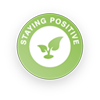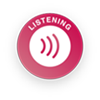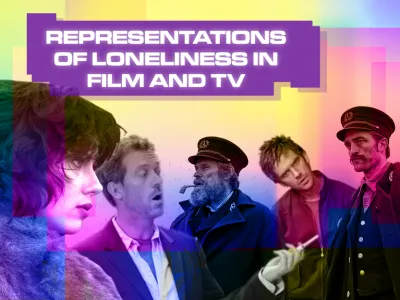
More Than My Mental Health: Body Dysmorphic Disorder
Include this article in your Skills Builder Journal. It could help you develop... 

A Writers’ Club member shares their story…
For as long as I can remember, I’ve had body image issues. I remember when I was ten years old and a family friend - an adult - told me I have ‘child bearing hips’. A weird thing for an adult to say to a child anyway, but it made me, at such a young age, become incredibly aware of what my body looked like. I remember when I was twelve and was the first person in my class to have to wear a bra because I’d suddenly ‘developed’. And then I remember just as quickly stopping wearing it because the boys used to try and ping the straps open and it made me so uncomfortable and embarrassed.
I remember my first stretch marks. My first bit of cellulite. Being on diets, obsessing over every single calorie I took in. Losing pounds, gaining back those pounds. Gaining muscle, losing muscle. I remember when my first real relationship ended, I lost two and a half stone and everyone said I looked “so skinny” and I thought it was ~GREAT~ but the reality was I was incredibly heartbroken, not eating, not taking care of myself, and in a really bad mental space.
I remember every time I’ve grabbed a cushion when I’ve sat on a sofa to ‘hide my stomach’ because I didn’t want anyone to see what it looked like in that position. Every time I’ve cried because an outfit ‘makes me look like a slug’. Every intimate moment I’ve ruined because I was too caught up in how I thought I looked. Every day at the beach I roasted under layers because I was too self conscious to wear a bikini. Every time I’ve had to manically fix my hair because it ‘didn’t look perfect’. Every time I’ve ripped my nail beds to shreds because I needed to ‘just get that tiny bit of skin smooth’. I remember spending 99% of my time preoccupied with negative, hurtful, broken-record-type thoughts about the way I look, meaning more than who I actually am.
And I remember when it all changed. Last summer, I was out with two of my best friends, and, as the conversation typically goes, we ended up talking about body image. One of my friends said “there must be something you love about how you look though?” and honestly, I struggled for an answer. And then, a week later, when me and my boyfriend were supposed to meet some friends for drinks, I had a full blown panic attack at the thought of it. I could barely breathe, I couldn't stop crying. And I knew this wasn’t normal. Sure, most of my friends have some issue with the way they look sometimes, but none of them were a couple of minutes away from having to call an ambulance because of it. My boyfriend has always been very supportive of me, and has asked me several times in the years we’ve been together whether I’ve thought about talking to someone about my body image issues, but I always thought it was a pointless idea. On this day, once I’d got my breathing back, I told him he was right, and that I needed help.
I ended up using the NHS IAPT service, which offers free psychological therapies to people who need it. I had to fill out a form online, then got a call from a triage nurse. They went through some more questions, and a week later I heard back from them again. They had two options for me - get on a waitlist for in person therapy (which could take up to 16 weeks) or start virtual therapy the following week. I chose the latter, and within a week I was having therapy for Intensive Body Dysmorphic Disorder. I didn’t even know that’s actually what I had until I spoke to the triage nurse, who told me that the symptoms I’d described were severe.

I had sixteen weeks of therapy in total, with an incredible therapist called Nina. The type of therapy I had touched lightly on the reasons this behaviour started, but mostly on ways to change my thinking and combat the issues that overwhelmed me. For the first time in my life, I started to get a grasp of what this ‘thing’ was.
I learnt the term preoccupation, which kind of does what it says on the tin - it meant that the majority of my time was spent preoccupied with negative body image thoughts. And that’s true. It was debilitating. I described many occasions to Nina about when I’d be alone in my flat, watching TV for example, and I’d become so obsessed with how I was sitting on the sofa because ‘what if someone came in and saw me at this angle’. I explained that I constantly check myself in mirrors, reflective surfaces and my phone camera - and got told that this is not in fact a symptom of narcissism, but a very common symptom of having body dysmorphic disorder; the incessant need to make sure that how you are presented is ‘right, ‘perfect’, ‘in order’. I told her how many times I had to change my clothes throughout the day or had breakdowns deciding what to wear because clothes that showed off my figure were too panic-inducing, but clothes that were too baggy meant that I also worried that people might think I was bigger than I am. I told her how when I looked in the mirror all I could see were flaws. And that when I had a particularly bad/negative thought, my first instinct was to go to a mirror…not to make myself see that I was overthinking, but to do the opposite; to give in to the bad thought and to say ‘yep, you’re disgusting, I knew it’. All these things, and more, I’d struggled with for as long as I can remember, and all these things I thought were normal. That everyone did them.
Nina and I set out a plan for the 16 weeks I would be doing therapy. I had to learn a lot of tools and practices to help me overcome the worst feelings, and manage the smaller ones. One of the things I had to do was become wary of my safety behaviours - these are the subconscious things I do that feel like they are helping negative thoughts, but actually just prolong them. For me, my safety behaviours included readjusting my hair, covering myself with pillows or baggy clothes, and checking mirrors. I had to keep a diary during the time I was doing therapy to see how often I was doing these behaviours and why I did them. From there, Nina and I figured out ways to combat those and look in depth as to why I felt the need to have safety behaviours in place anyway.
Another major thing I had to do was mirror retraining. This might seem silly to some people, but when you have BDD, it’s almost impossible to look in a mirror objectively. You only really ever look subjectively; you pick out all the small details about how your body image is ‘wrong’, what your ‘flaws’ are and you let your inner critic take over constantly. So I had to learn how to look in a mirror. I had to - in the sessions with Nina, and on my own time - look in the mirror and say five things about myself that are objective. So, for instance, “I have brown hair. I have two arms. I have two legs. I am wearing a blue jumper. I have blue eyes.” And then I had to leave the mirror space and that was it. For me it was mind blowing how much it changed the way I viewed myself. When you just look at what is in front of you as an object, rather than a bundle of feelings, it really silences your inner critic, and feelings of shame, helplessness and lack of self worth. I am now able to look in a mirror - even get changed in front of a mirror - without negatively criticising myself, or having panic attacks about the way that I look.
I also had to do exposure therapy. Nina and I created a hierarchy of situations that gave me anxiety when it came to my body image issues, going from the least (around 50%) to the most anxiety (100%). The situations ranged from doing video calls with no makeup on to being in social situations wearing dresses with bare legs, wearing a bikini to going out to eat wearing clothing that is tight and therefore showing off my figure fully. These situations may not seem like much to most people, but when you’re consumed with negative thoughts about the way that you look, and specific areas of your body, ‘simple’ things can feel absolutely enormous and unmanageable. Over my 16 weeks, I had to do as many of the situations on my hierarchy table as possible. The idea being to immerse myself in the anxiety and ride the wave. So, I did as many as I could. And it was really tough, but really worked! One of the biggest things for me was going to the gym in just a sports bra and leggings - it’s something I’ve seen plenty of women do and have never ever thought I’d be able to. My inner critic has never allowed me to see myself as worthy of doing that. But I did. I chose to do activities that I felt would give me the biggest chance of staying there the longest - so mostly things where I was standing up, rather than being bent in different positions etc. It was a very scary thing to do and I felt sick as soon as we walked in. I felt quite vulnerable and exposed throughout too, but I managed to stay there for about twenty minutes before it got too overwhelming. Twenty minutes more than I ever thought I’d be able to do. And the idea with exposure therapy is that you keep doing it until it becomes something that doesn’t induce any anxiety. So we went again the next day, and the next. And now, I feel like it’s normal to work out in those clothes. It doesn’t mean I do it every time I hit the gym, but I know I can if I want to. And it’s the same with the other things on my hierarchy. I didn’t get to do all of them, especially the number one spot - wear a bikini - because my therapy happened during winter (!) but, I am going on holiday this summer and I will be wearing a bikini and loving myself for it. Because a bikini body literally just means having a body and wearing a bikini!
I have to be honest, Body Dysmorphic Disorder is a miserable thing to live with. It can really damage ideas of self worth, appreciation and love, and take its toll on a person emotionally and physically. But it’s important to know that it can be helped. Through my therapy I have learnt to appreciate myself in ways I never thought possible. I have learnt to see myself in a new light, and love myself more than I ever thought I would. At the end of the day, the way we look is the least important thing about us, and I’m glad I can finally see - and believe - that. I’ve put a lot of work in to get this far, and the work will likely continue all my life, but it’s something I am prepared for, and happy to do. I know a lot of people might also be feeling how I used to, and I truly recommend asking for help. Have real, uninhibited conversations about the way you feel about yourself with your friends or family members, and don’t keep it bottled up, as that never helps and just gives your inner critic more fuel to fan the flames. And, if you feel ready to, sign up for the NHS IAPT services. They are free and available all over the country, and have professionals waiting to help.




